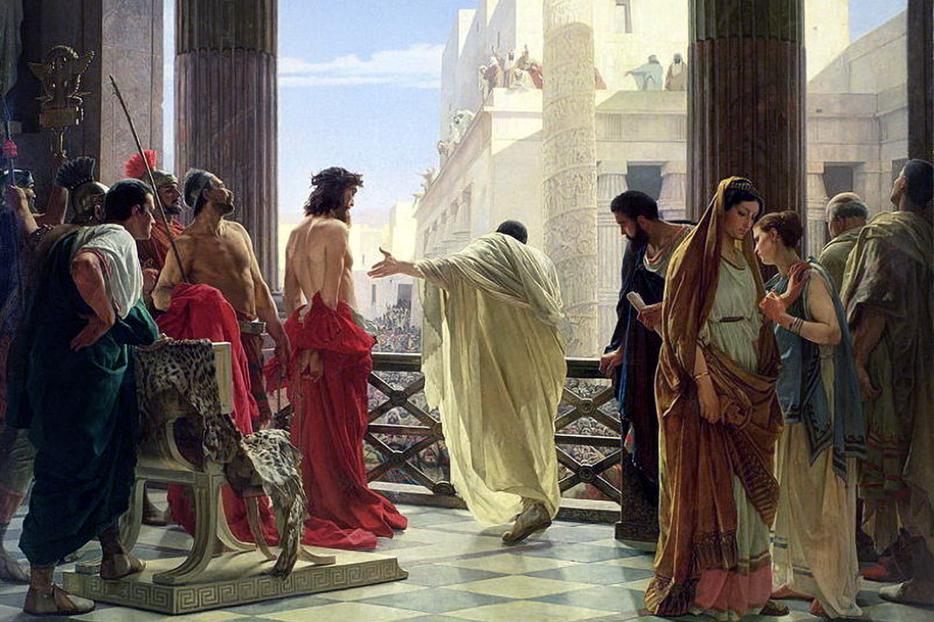The Shroud of Turin is one of the most well-known and mysterious relics of the Roman Catholic Church. The textile of the Shroud of Turin, preserved in the Basilica of St. John the Baptist and believed to hold the death shroud of Christ, depicts the contours of a man whose body shows traces of the tortures described in the biblical accounts of the Passion. In the ongoing debate about the origin of the Shroud of Turin, a new research result has emerged that strengthens the argument that the shroud is indeed original.
The first mention of the Shroud of Turin, also known as the burial cloth, appears in the New Testament by the evangelists. Mark’s Gospel states: “He bought fine linen, and taking Him down, wrapped Him in the linen cloth and laid Him in a tomb.” (Mark 15:46). Matthew’s Gospel also mentions Christ’s burial cloth: “Joseph took the body and wrapped it in a clean linen cloth.” (Matthew 15:46). The youngest disciple, John, provides the most detailed account of the shroud: “The other disciple then went in, the one who had reached the tomb first. He saw and believed. (John 20:4-8) The earliest source outside of the canonical texts is from the 4th century, written by Saint Cyril, who wrote around 340 AD that Jesus’ burial cloth, “a witness of the resurrection,” is kept in Jerusalem.
The next stop in the journey of the shroud was Edessa in Asia Minor, where the sacred relic arrived in the early 6th century. Nearly three centuries later, in 944, it was taken to Constantinople as “the image not made by human hands,” a decree by Emperor Constantine VII. Later, in April 1204, when the Crusader armies, with the instigation of Venice, stormed and looted Constantinople, the relic disappeared.
It is assumed that in the following century, the Shroud of Turin might have been in possession of the Templar Order, as noted in a document from 1287, which states that Arnaut Sabbatier, a Templar knight, had to place his hand on the sacred shroud during his initiation. This fact is reinforced by the circumstances of the Order’s downfall in 1307 when King Philip IV of France, in an attempt to seize the Templars’ wealth, accused them of idolatry, particularly referring to the oath taken on the shroud. Eventually, the shroud was gifted to the Savoy family in 1453, and it remained in their possession until 1983 when, in accordance with the will of King Umberto II, the family donated the relic to the Vatican.
Controversial Result in Carbon Dating
In the 20th century, the Shroud of Turin fell into obscurity until the 1970s when the first comprehensive scientific examination of the shroud was conducted using the most advanced methods. Secondo Pia, an Italian lawyer and amateur photographer, first revealed the mysterious three-dimensional image of a bearded man on the negative photograph of the shroud in 1898, leading to newfound interest in the relic.
Further research conducted in 1931 was a significant milestone in examining the shroud. With updated technology, Giuseppe Enri captured more detailed images of the shroud, revealing traces of scourge wounds, nail marks on the wrists and ankles, a wound from a spear at the chest, and scratch marks from a crown of thorns on the forehead and scalp. In the late 1970s, the first comprehensive scientific examination of the Shroud of Turin was conducted with the participation of experts from various scientific fields, acting on behalf of the Savoy family and with the approval of the Vatican.
Gilbert Raes, a researcher at the University of Ghent and an expert in ancient textiles, determined that the shroud was likely made in the 1st century in Palestine or modern-day Israel based on the herringbone weaving pattern and material characteristics. However, in 1988, radiocarbon dating conducted by independent laboratories in Oxford, Zurich, and Arizona challenged this conclusion, suggesting that the shroud could have originated between 1200 and 1304. Subsequent studies by the Los Alamos National Laboratory highlighted inconsistencies and errors in measurement conditions, casting doubt on the 1988 radiocarbon dating results. New research in 2004 and 2008 by the Los Alamos National Laboratory raised questions about the sample collection methods and potential contamination due to post-production modifications on the shroud.
New Findings Supporting Ancient Origin
In April 2024, archaeologist William Meachm published a study providing evidence that the Shroud of Turin dates back to Jesus’ era, based on textile samples from Judea and Egypt in the 1st century. Comparisons with ancient textile samples suggest the shroud’s fibers align with those from Judea in the 1st century, supporting the hypothesis of its ancient origin.
Moreover, a study published in the Heritage Journal in 2022 and conducted at the Bari Crystallography Institute in Italy made significant discoveries. Researchers examined a linen sample from the shroud using a specialized X-ray procedure, comparable to studying mineral crystal structures, and compared it to an authentic ancient textile sample from Masada fortress in Judea. The results concluded that the 1988 radiocarbon dating sample was not properly cleaned, rendering the dating inaccurate.
Experts who focused solely on the fabric’s structural analysis ruled out the shroud’s medieval origin and suggested that it remained in a single location for at least 1300 years, under stable temperature and humidity conditions. The study brought new evidence to support the hypothesis that the handwoven Shroud of Turin is a genuine textile from Jesus’ era.
Unsolved Mysteries of the Shroud
Despite these advances, the mechanism of how the body contour on the shroud was imprinted remains a mystery. The argument that the figure was painted (a key point in many forgery theories) is refuted by various objective factors. Scientific analyses have identified faint red blood stains at the wound sites, reflecting blood from the AB blood type commonly found in Middle Eastern populations. Computerized image enhancement techniques revealed blood traces indicative of cracked capillaries at the facial impression, suggesting a real human body was enshrouded.
Physical physicists have refuted the idea of artificial, painted origins as they found no material or paint capable of replicating the body’s contours in the way seen on the shroud. They believe that an unknown high-energy radiation caused the imprint on the textile, likely emanating from the body covered by the shroud. The shroud’s authenticity as a genuine relic from Jesus’ era is supported by the majority of experts, and new research findings continue to provide evidence for its ancient origin.
These ongoing studies and debates surrounding the Shroud of Turin highlight the enduring fascination and mystery surrounding this ancient relic, with its true origins and the imprint of a man’s body remaining subjects of intrigue and speculation.




